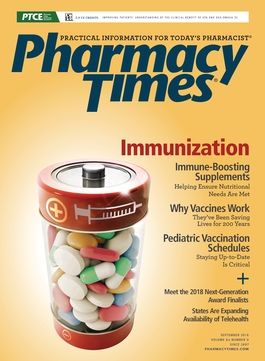Publication
Article
Pharmacy Times
Linezolid and Serotonin Syndrome
The antibacterial agent linezolid is a nonselective inhibitor of monoamine oxidase (MAO), and when it is combined with serotonergic agents, it has been associated with serotonin syndrome. A recent case of serotonin syndrome was reported with concur- rent use of linezolid and methadone.
The antibacterial agent linezolid is a nonselective inhibitor of monoamine oxidase (MAO), and when it is combined with serotonergic agents, it has been associated with serotonin syndrome. A recent case of serotonin syndrome was reported with concurrent use of linezolid and methadone.
CASE REPORT
A 39-year-old man on darunavir, lamivudine, methadone, ritonavir, and tenofovir was admitted with a high fever and septicemia.1 After initial antibiotic therapy with amoxicillin and ceftriaxone, he was switched to 600 mg of clindamycin 4 times a day and 600 mg of linezolid twice a day. Within 3 days he became agitated, confused, and disoriented, and he developed increased tone in both legs, hyperreflexia, and clonus. These symptoms clearly warrant a diagnosis of serotonin syndrome using the more specific Hunter criteria.2 Assessing the causality of the serotonin syndrome because of linezolid plus methadone in this case using the Drug Interaction Probability Scale gives a rating of “probable.”3
Methadone is one of the opioids that is known to have serotonergic effects, along with fentanyl, meperidine, and tapentadol. In the case described above, the methadone plasma concentrations may have been higher than expected because 2 of methadone’s metabolic pathways are inhibited by ritonavir (CYP2D6 and CYP3A4) and darunavir (CYP3A4).
Linezolid is a relatively weak nonselective MAO inhibitor, but a number of cases of serotonin syndrome have been reported when it has been combined with serotonergic agents. Most of the case reports have involved the use of linezolid with serotonin-norepinephrine reuptake inhibitors (SNRIs) or selective serotonin reuptake inhibitors (SSRIs), though isolated cases have been reported when linezolid was used with other serotonergic drugs.4-11
Results from retrospective studies suggest that there is a low overall risk of serotonin syndrome in large populations of people receiving linezolid with SNRIs or SSRIs,12,13 and in many of the reported cases, the patients had a variety of predisposing factors that probably increased their risk.
In one case, a 98-year-old man developed serotonin syndrome after the concurrent use of linezolid with both amiodarone and citalopram.4 The citalopram serum concentrations were probably higher than normal because amiodarone inhibits several of the metabolic pathways and transporters for citalopram such as CYP2D6, CYP3A4, and P-glycoprotein.
In another case, a 68-year-old woman who developed well-documented serotonin syndrome while on linezolid had received 2 serotonergic drugs, fentanyl and amitriptyline.5 Although amitriptyline does not have strong serotonergic effects, it probably added to the serotonergic effects of fentanyl in this case. Other cases of linezolid-associated serotonin syndrome have involved the combined use of fentanyl and fluoxetine in a 4-year-old girl8 and duloxetine and fentanyl in a 55-year-old woman.9
A 58-year-old man with obsessive-compulsive disorder was taking 60 mg of fluoxetine a day for 10 years, 100 mg of sertraline for a day for 7 weeks, and 100 mg of fluvoxamine a day for 5 weeks without evidence of serotonin syndrome.10 Fentanyl and linezolid were added, and his SSRIs were stopped. But he developed signs of serotonin syndrome with spontaneous clonus, hyperreflexia, rigidity, and diaphoresis. He responded to discontinuation of the fentanyl and linezolid, along with the serotonin antagonist cyproheptadine, with a 12-mg loading dose, followed by 2 mg every 2 hours. Cyproheptadine has been recommended by others for the prophylaxis or treatment of serotonin syndrome.14
CONCLUSION
Many cases of serotonin syndrome have been reported in patients receiving linezolid, along with serotonergic drugs. Many of the patients had predisposing factors, such as more than 1 serotonergic drug or the presence of other drugs that increase the plasma concentration of the serotonergic drug. Although results from retrospective studies suggest a low prevalence of serotonin syndrome in patients receiving linezolid with serotonergic drugs, those on such therapy should be monitored for evidence of serotonin syndrome. Prompt discontinuation of the serotonergic drugs and the linezolid (if possible) is indicated. Cyproheptadine treatment has apparently been useful in treating serotonin syndrome in several cases, but no controlled studies are available.
John R. Horn, PharmD, FCCP, and Philip D. Hansten, PharmD, are professors of pharmacy at the University of Washington School of Pharmacy in Seattle.







